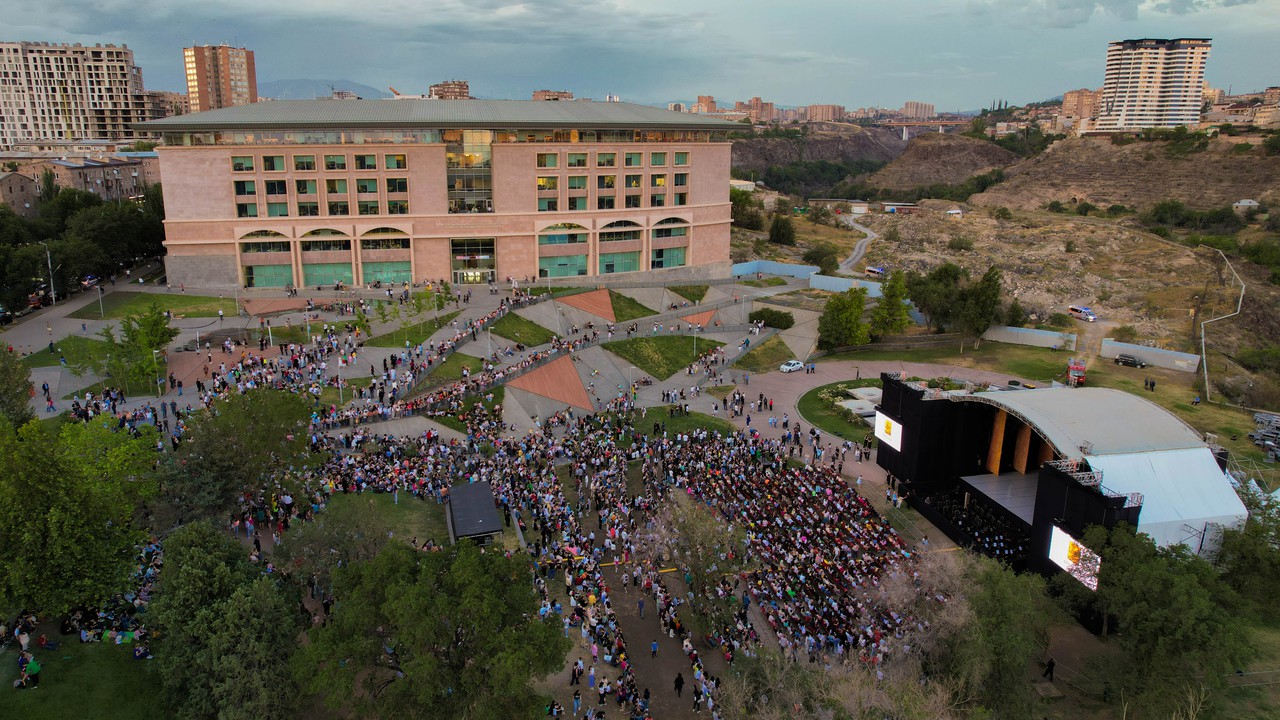BLOG

Nork bridge
A wealthy man vowed to build seven similar bridges in Yerevan, of which only Nork bridge survived the devastating earthquake of 1679.
One of the oldest monuments of Yerevan, the Nork bridge, still exists and is still standing. left in the yard of a citizen's private house. I went to see it a few days ago. They were doing earthworks around the bridge. I took a photo. Perhaps he was the owner of the mansion. approached, asked why I was taking pictures. who am i I said, I am a resident, I came to see the bridge. He said that the bridge was saved only by his efforts, he saved it from the hands of the state. And he did not elaborate on his "effort to rescue".
Every year I am going to see the old bridge of Nork. Going to make sure it's still standing. I am also ready for the image of collapse and destruction. Whatever you do, you must be convinced of that. Yervand Shahaziz, the memorial keeper of old Yerevan, writes that, according to a Norke resident, a wealthy man made a vow and built seven similar bridges in Yerevan, of which only Nork Bridge survived the devastating earthquake of 1679 and the floods of the Getar River. The old bridge of Nork has remained standing, resisting the indifference of both the state and the people of Yerevan, their exercises of forgetting for years, with which they have become so skilled and hardened.
Yerevan is an old city, but it is not a city of antiquities. Fragments of the monuments of the past have been preserved: the half-destroyed Avan Cathedral, the half-destroyed Red Bridge, you don't know with what providence, the old bridge of Nork, the Blue Mosque (by the efforts of Charents). Below I present excerpts describing the Nork Bridge (with photos) from Karo Ghafadaryan's "Yerevan. Medieval Monuments", Yervand Shahaziz's "Old Yerevan" and Vahram Daryan's "Patriotic one-day trip. Explore the native country" from the books.
Karo Gafadaryan. "Yerevan: From the book "Memorials of the Middle Ages".
In the valley of Nork, on the river Getar, there is a small bridge. Its flight from one peak to another is 6.9 meters. The significance of this bridge in the past was great. Trade caravans headed north, reaching the banks of the Sevan, Georgia and the Russian Plain, passed along it. Although the river is a small stream, it sometimes floods the neighborhoods of Yerevan city and causes great damage. Bridges over it have often been destroyed by the destructive force of the Getar River, especially when the river overflows, bringing huge river rocks. This explains the fact that old bridges on the Getar River have not been preserved.
The current Nork bridge has been out of use for about 10 years as a result of the conversion of the former narrow lane into a wide avenue and the construction of new bridges. That bridge is now preserved as a historical monument by the side of the road.
The bridge of Nork was built in 1664 with funds from Reverend Hovhannes from Nork. The master builder, as can be seen from the falsified inscription, was Grigori's son Kirakos, but over time, that small bridge also underwent some changes. Its central part in ancient times had a rise on both sides, almost parallel to the arch of the bridge, which is pointed and higher than half a circle in the center.
However, it is interesting that this bridge, built with hewn stone, withstood many floods, as well as the powerful earthquake of 1679.
The main record of the construction of the bridge is engraved on its arch. The written record of Saint Hovhannes is kept in the History Museum of Armenia. The last renovations were done by the Department of Monuments and Landmarks in the 1950s.
From the book "Old Yerevan" by Yervand Shahaziz (Yerevan, "Mughni" publishing house, 2003, p. 212-213).
Vahram Daryan. To Nork bridge
In 1949, "Patriotic one-day campaign" was published in Yerevan. Study the native country" booklet. compiled by Vahram Daryan. It was intended for schoolchildren, who, by taking city walks, should get acquainted with the ancient monuments, interesting places and districts of Yerevan.
The one-day itinerary of the patriotic excursion was as follows: "University district - Gh. Ghukasyan park - Norki bridge - Norki district - Norki berdadzor - Zoological garden - Botanical garden - Kanaker - Kh. The House-Museum of the Abovyan Museum". The brochure gave a brief description of them, and here we read about the bridge of Nork.
"Among the old monuments of Nork, the old, single-arch bridge of Getar, which is stretched over the river in a deep valley, deserves separate attention. the big busy road of Nork descends on it, passing over it, it goes to Sevan and the villages near it. Although it is small, it is a solid, red-colored, hewn stone building, similar to many other bridges in Armenia left over from the Persian Empire, built in the same style and architecture. The bridge was built, as you can see, from the Armenian number РЖЖГ engraved on it in two places, that is, our number. in 1664, said that it is currently a 285-year-old building.
From the second inscription on the arch of the bridge, it is clear that the engraved dates are the dates of the bridge's construction, that the builder is Hovhan or Reverend Hovhannes from Norki, that the bridge was built by Persian Shah Abbas (died 1666) and Armenian Catholicos Hakob D Jughaetsi (1655-1680). times and the master builder's name was probably Cyracos" (Pages 5-6).
Author: Aram Pachyan


